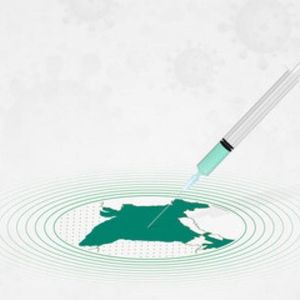

Our Review Process
Our articles undergo extensive medical review by board-certified practitioners to confirm that all factual inferences with respect to medical conditions, symptoms, treatments, and protocols are legitimate, canonical, and adhere to current guidelines and the latest discoveries. Read more.
Our Editorial Team
Shifa Fatima, MSc.
Author
Dr. Apoorva T, MHM.
MEDICAL ADVISOR
Diabetes - Beginners guide to diabetes
Diabetes is a condition in which either your body does not produce insulin or fails to utilize the insulin produced effectively which leads to abnormal blood sugar levels. Various types of diabetes include type 1, type 2, and prediabetes.
Type 1 is an autoimmune disorder where the insulin-producing cells of your body get damaged resulting in an excessive buildup of glucose in your blood. Treating type 1 requires insulin injections, a healthy diet, and daily exercise.
Type 2 is a situation where your body either does not produce enough insulin or produces insulin that is not effectively used. This type of diabetes is usually a result of a poor lifestyle. It can be treated or reversed through medications, healthy eating choices, having a physically active body, etc.
Prediabetes is a condition in which your sugar levels are high but not high enough to be diagnosed as diabetes. If you have pre-diabetes your risk of developing diabetes is high.
You will experience symptoms such as increased thirst, frequent urination, skin irritations, delayed wound healing, tingling effect in feet or hands, etc. if you have any of the above-mentioned types of diabetes. Also read about urine sugar level
Table of Contents
Diabetes testing
Diabetes is often known as the Silent Killer since it is often symptomless and only starts showing when the condition has already progressed to a large extent. Another reason is that it does not manifest as a single illness, but instead affects a lot of your body systems leading to several other disorders and comorbidities. This critical nature of diabetes is what makes it necessary to be able to diagnose the condition early so that its onset can be delayed or prevented altogether. Hence, the key to staying healthy is to get screened for diabetes or tested at regular intervals and always stay one step ahead of the condition. Lets start by first seeing who should get tested. Read more about treat gestational diabetes.
Who should get tested?
1. Based on Early Warning Signs & Symptoms (One or more of the below)
- Extreme thirst
- Excessive hunger
- Frequent urination
- Tiredness
- Blurred Vision
- Delayed healing of cuts or wounds
2. Based on Risk Factors & Red Flags (Any of the below)
- Age >40 years
- Being Obese or Overweight with excessive fat in and around the abdomen (Belly Fat)
- Waist Size more than 40 inches in Men and 35 inches in Women
- Family history of Diabetes
- History of Cardiovascular conditions
- Women diagnosed with Gestational Diabetes or Polycystic Ovarian Syndrome (PCOS)
Also read about how to prevent diabetes
Why should you get tested?
- Diabetes cannot be cured, but it can be reversed and managed if detected early. If it is diagnosed at a later stage or poorly managed, it can lead to further complications of diabetes mellitus like cardiovascular disease, retinopathy, diabetic foot, pregnancy complications, kidney diseases and neuropathy.
- Testing for individuals with Diabetes helps to plan, manage and maintain blood glucose levels below a specific limit to avoid damage to other vital organs. If it is left untreated, the high sugar levels in the blood can lead to serious consequences where even medications may not be effective.
- Testing is crucial even for individuals with Prediabetes, since there is a chance to reverse this health condition or delay its progression to diabetes if diagnosed in time.
- Being diagnosed with diabetes can have a strong emotional impact on you and your family. Positive thinking and learning about your condition will lead to lifestyle changes that are imperative for diabetes management
- Having awareness about your blood glucose levels and measures to control them will not only help you in managing your diabetes effectively, but also to lead a long, healthy and disease-free life. Also know about pre diabetes levels.
What are the Criteria for Diagnosing Diabetes?
There are certain criteria for diagnosis of diabetes which are studied as per the results of diabetes tests. These criteria include
- Experiencing symptoms such as frequent thirst, urination, dizziness, nausea, etc., and having blood sugar levels more than or equal to 200 mg/dl. Perform a blood sugar test to know about your sugar levels.
- If your fasting blood sugar levels are around or more than 126 mg/dl. This test is done when you are empty stomach for almost 8 hours,
- Having blood sugar levels equal to or greater than 200 mg/dl as per the 2-hour oral glucose tolerance test. This test is usually done for diagnosing gestational diabetes.
- If you have hemoglobin A1c of more than 6.5%. However, this test is not suitable for everyone and you must consult your healthcare expert.
If you meet any of the above-mentioned diabetes diagnosis criteria then you do not have normal blood sugar levels and are diagnosed with diabetes. Also know about blood sugar pp
Blood test for diabetes
Certain blood tests are performed to diagnose diabetes. Some common diabetes blood tests such as PPBS, FBS, A1C, and OGT are performed to get detailed information on your blood sugar levels. To treat and reverse the disease it is essential to undergo blood tests for diabetes. Even if you are diagnosed with diabetes, you must undergo frequent diabetes tests to track your sugar levels. The result will help you to alter your eating habits and provide you with a better picture of what works and what doesn’t work for your diabetes management.
What are the Diabetes Tests Available?
Now that you know why testing is so important, let's take a look at the different tests available for diagnosing diabetes.
1. Fasting Blood Sugar (FBS) Test
In this test, blood samples are collected, usually in the morning after fasting overnight. Following an overnight fast, a blood sample will be collected. Fasting blood sugar normal range is less than 100 mg/dL (5.6 mmol/L). Prediabetes is defined as fasting blood sugar levels ranging from 100 to 125 mg/dL (5.6 to 6.9 mmol/L). You have diabetes if your blood sugar level is 126 mg/dL (7 mmol/L) or greater on two independent tests. Also know about pp blood sugar
2. Post-Prandial Blood Sugar (PPBS) Test
Post-Prandial blood glucose levels are measured 2 hours after eating a meal. The postprandial test is usually performed two hours after eating a meal. The time for the same starts with the beginning of the meal. Blood sugar levels in healthy people normally return to normal within 2 hours, but in people with diabetes, they may stay elevated. As a result, it acts as a last test for people who may have diabetes, as well as if the person with diabetes is able to control his blood sugar levels. The normal blood sugar level for this test is 100–140 mg/dl. Also know about blood sugar post prandial
3. Glycated Hemoglobin (A1C) Test
A1C measures the glucose amount carried in the hemoglobin accumulated over 3 months. This blood test is taken independent of when you have eaten. It measures the amount of glucose stuck to the hemoglobin (part of your red blood cells), which accumulates over approximately 3 months. This non-fasting blood test determines your average blood sugar level over the previous two to three months. It calculates the amount of blood sugar bound to hemoglobin. Diabetes is diagnosed when your A1C result is 6.5 percent or above on two different tests. Prediabetes is indicated by an A1 result between 5.7 and 6.4 percent. A value of less than 5.7 is deemed normal.
4. Oral Glucose Tolerance (OGT) Test
This test involves multiple sampling at various intervals. First sampling is done after overnight fasting to determine fasting blood glucose level. The person ingests sugar syrup or liquid, and the blood samples are collected at 1-hour, 2-hour, and 3-hour intervals. The OGTT is primarily used to diagnose gestational diabetes. The person must fast for 8 hours before doing the OGTT, following which a fasting plasma glucose level is measured and an oral glucose solution is administered.
Following that, blood samples may be obtained up to four times at varied intervals to assess blood glucose levels. OGTTs are often conducted in the morning since glucose levels typically decline during the afternoon. The standard OGTT fasting range for prediabetes is 100–125 mg/dL, 126 mg/dL or more for diabetes, and greater than 92 mg/dL for gestational diabetes. The typical range for OGTT findings after 2 hours is between 140 and 199 mg/dL for pre diabetes, 200 mg/dL or above for diabetes, and greater than 153 mg/dL for gestational diabetes.
Blood Sugar values across categories, for HbA1c, Fasting, Post-Prandial and Glucose Tolerance are as shown in the table below. Also read about can diabetes be cured.
5. Random Blood Sugar Test
This test is taken randomly at any time of the day. There are no special requirements like fasting to undergo this test. If your results are beyond 200 mg/dl then you are a diabetic.
To diagnose gestational diabetes, other tests need to be performed which include a glucose screening test, glucose tolerance test, etc. Know more about random blood sugar.
How is diabetes mellitus diagnosed?
If you are experiencing symptoms of diabetes such as frequent urination, increased thirst, sudden weight loss, tingling effect in feet or hands, delayed healing of wounds, etc. then you must undergo a diabetes diagnosis test. Certain diabetes tests include fasting blood sugar test, glucose tolerance test, A1c hemoglobin test, etc. Once you get these tests done your healthcare expert will examine the results and confirm if you are diagnosed with diabetes. For other types of diabetes such as gestational, there are other tests that your healthcare expert will recommend. You can also track your blood sugar levels using blood sugar testing kits at home. Also know how to reverse diabetes.
Bottom Line
Taking timely precautions is key to prevent type 2 diabetes. Diabetes that comes with age, family history, or genetics cannot be prevented but can be controlled effectively by self-management and expert advice. So having gone through the Who, Why and What of diabetes testing, if you fall under any of the risk factors or notice relative signs or symptoms don't hesitate to consult your healthcare provider immediately and get tested for diabetes. Also know about medications for diabetes.
FAQs
Can I test for Diabetes at home?
A finger prick test using a home testing kit may reveal elevated blood sugar levels but will not diagnose diabetes. Blood tests that assess blood glucose (sugar) levels are the only method to determine whether you or a loved one has diabetes. Only a fully qualified doctor can give a diabetes diagnosis.
How to prevent Diabetes?
If you are someone who’s at risk for developing diabetes, there are certain things you can do to be able to avoid or postpone developing it. The majority of what you need to accomplish involves adopting a healthy lifestyle. Keeping your weight in check, getting regular exercise and getting enough sleep, eating healthy and avoiding smoking and drinking are just some of the things that can be done to ensure prevention.
Can I test for diabetes at home without blood?
Diabetes cannot be diagnosed just by using diabetes home test. People who get unexpected results will need further testing by a doctor. Fasting tests, oral glucose tolerance tests, HbA1c testing, or a combination of these approaches may be performed by the doctor. Another method for testing your blood sugar is the Freestyle Libre system. While this approach has several similar characteristics with a Continuous Glucose Monitor and a meter, it differs in one important way: it does not involve pricking or blood. With the Freestyle Libre, you'll still have a little sensor put under your skin. It differs from a CGM in that it does not provide continuous readings. When you wish to check your blood sugar level, you'll use a reader to scan the sensor rather than pricking your finger like you would with a meter.
Why to conduct a ppbs test during pregnancy?
Post-prandial blood glucose tests are undergone by pregnant women to know whether they are diagnosed with gestational diabetes. Gestational diabetes is a type of diabetes that women are prone to during their pregnancy. Diagnosis can be detected by undergoing a timely ppbs test.
What is ppbs test?
Post-prandial blood glucose test is a diabetes diagnosis test in which blood sugar levels are measured 2 hours after having a meal. Blood sugar returns to normal post 2 hours of a meal. However, if you have diabetes your blood sugar stays elevated even after 2 hours of having a meal.
Can diabetes be detected in a blood test?
Yes, diabetes is commonly detected using blood tests. These tests accurately detect glucose (sugar) levels in your blood. The diagnosis is usually done in the laboratory. Although later to track your blood sugar levels, you can perform blood tests at your home using a blood test kit.
Is 101 blood sugar normal?
Yes, blood sugar around or under 100 mg/dl is considered normal. If your results are between 101- 125mg/dl then you have prediabetes and a high risk of developing diabetes and if your blood sugar levels are beyond 126mg/dl you are diagnosed with diabetes.

References
- https://www.cdc.gov/diabetes/basics/getting-tested.html
- https://www.niddk.nih.gov/health-information/diabetes/overview/tests-diagnosis
Disclaimer
This website's content is provided only for educational reasons and is not meant to be a replacement for professional medical advice. Due to individual differences, the reader should contact their physician to decide whether the material is applicable to their case.
More by Shifa Fathima

अर्जुनरिष्ट: फायदे, खुराक, नुकसान | पढ़ें | Sugar.fit

मधुमेह के लिए मधुनाशिनी वटी: उपयोग, लाभ, खुराक और दुष्प्रभाव|

मधुमेह को नियंत्रित करें भारतीय आहार से





